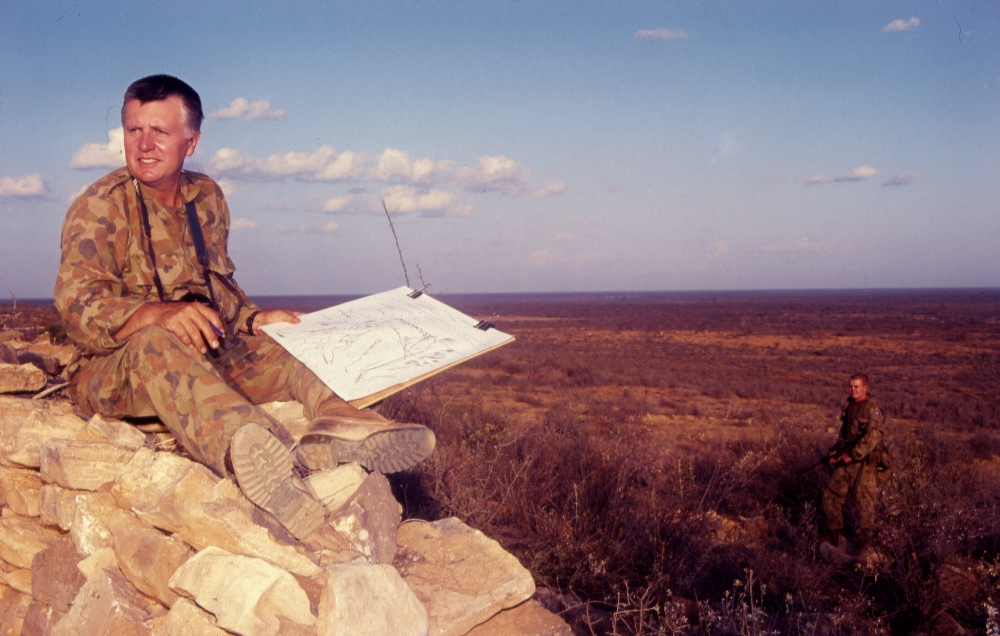The George Gittoes AM Photographic Archives of Australian Peacekeeping Operations
Introduction
George Gittoes AM is an Honorary Member of the Australian Peacekeeper and Peacemaker Veterans' Association and has captured much of Australia's 1993 to 2001 peacekeeping heritage on film, often at great personal sacrifice. We are fortunate that George has gifted his images to the Australian Peacekeeper and Peacemaker Veterans' Association on two conditions:
- that all images are made freely available to Australian veterans, and
- that any commercial use of the images first recognise his copywrite and that permission be sought to use the images commercially using this contact form.
George Noel Gittoes, AM, born on 7 December 1949, is a multi-talented artist, film producer, director, and writer. Throughout his career, George has remained steadfast in expressing his deep social, political, and humanitarian concerns regarding the devastating effects of injustice and conflict. His artistic endeavors have consistently focused on shedding light on the human impact of these issues.

This archive represents approximately 70% of the work gifted to us. The remainder is of great historical significance but not images that can be displayed on an open website. Research on the other images will be considered after contract is made with our Chairperson.
Unofficial War Artist
Our research has uncovered that George Gittoes was unofficially appointed Australia's war artist rather quickly and without consideration that would need the legislative protection he would have received if he had been officially appointed. This is no criticism of the ADF or the Commonwealth it is simply a fact that between the end of the Vietnam War and the peacekeeping operations of the 1990s, the knowledge required to appoint official war artists was not something that had been maintained.
George's role was widely publicised however he was never a designated Official Artist. Rather, he travelled under the auspices of and generally with the assistance of, and protection of, the Australian Defence Force, but remained free to express himself as he wished. On these trips he produced a large body of photographs, drawings and paintings.
His work commenced with outbreak in Rwanda of the most concentrated genocidal violence of the modern era a that time. In three months between 500,000 and a million Rwandans died. The resulting UN operation, the UN Assistance Mission for Rwanda (UNAMIR), included an Australian medical contingent and associated security and support personnel. A year after the original genocide, George visited the second rotation, once again with support from the ADF. By this time the Tutsi-dominated Rwandan Patriotic Front (RPF) had won the civil war, and the violence of 1994 had ended.
Huge numbers had been displaced in the 1994 fighting. The largest camp for internally displaced persons was at Kibeho, in south-west Rwanda. The camp held between 80,000 and 100,000 people. On 22 April 19 95 the Rwandan forces began a massacre, using rifles, machine guns, RPGs, bayonets, machetes, and possibly mortars. Next morning the Australians counted 4,000 dead. During the massacre the Australians gave medical treatment to and evacuated as many as they could, all the while witnessing terrible scenes.
All were affected by what they saw, George as much as any. Some things cannot be "unseen".
Photographic Archives
The pages catalogue photos taken in the following countries:
- Rwanda
- Cambodia
- Yemen
- Western Sahara
- Somalia
- Palestine
- Lebanon
- Nicaragua
- Bougainville
- East Timor
- Afghanistan 2009
The also cover the Middle East Area of Operations
Post Script
As at the time of release of this website in January 2024 the images are grouped by country and much work is required by volunteers to assist in correctly identifying the photos. We expect it will take two years.